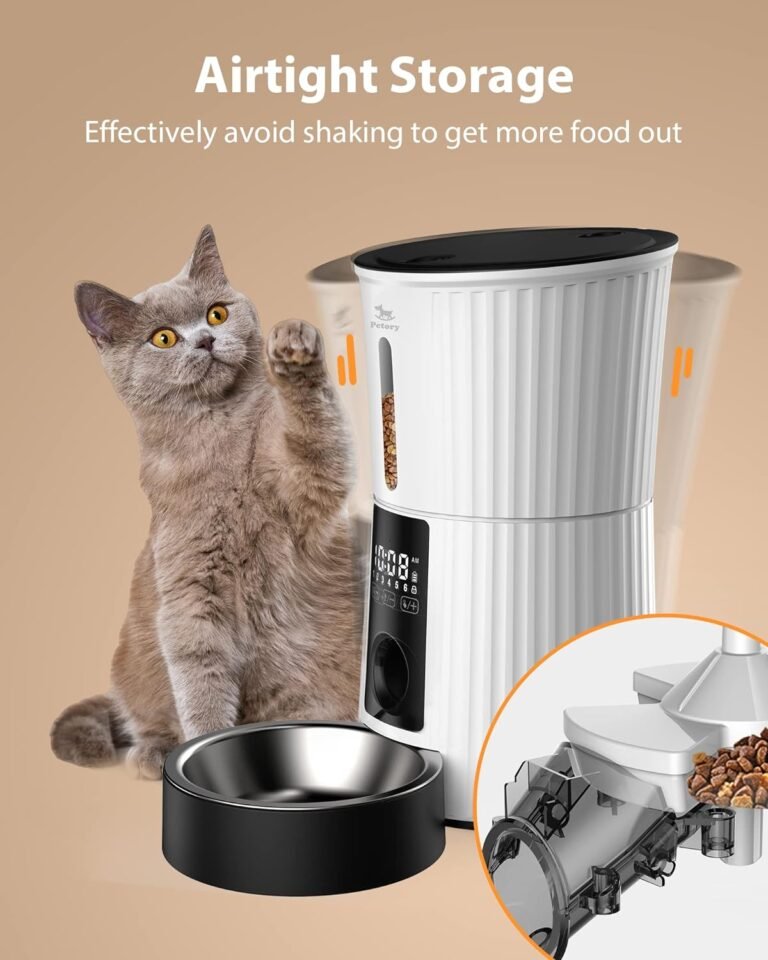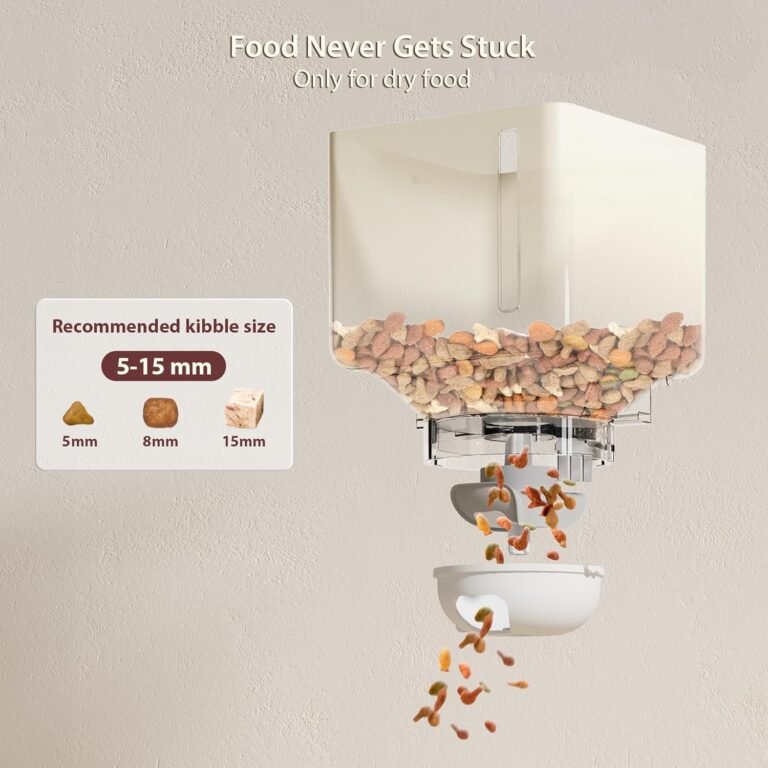Designing a Pet-Friendly Kitchen and Dining Area
Designing a pet-friendly kitchen and dining area is essential for creating a welcoming and safe environment for your furry friends. It involves selecting the right materials, incorporating storage solutions, designing a comfortable resting area, and ensuring pet safety. By following these guidelines, you can create a space that not only meets your needs but also enhances the well-being of your pets.
Key Takeaways
- Choose pet-friendly flooring that is durable and easy to clean.
- Select materials that are resistant to scratches, stains, and odors.
- Design a safe and accessible feeding station for your pets.
- Incorporate built-in pet food storage to keep supplies organized.
- Create a pet-friendly pantry to store treats and other pet-related items.
Creating a Welcoming Environment for Pets

Choosing Pet-Friendly Flooring
When it comes to choosing pet-friendly flooring, there are a few factors to consider. First, you’ll want to select a flooring material that is durable and resistant to scratches. Pets can be quite active and their claws can easily damage certain types of flooring. Look for options like hardwood, laminate, or tile that can withstand the wear and tear of pet activity.
Second, it’s important to choose a flooring material that is easy to clean. Accidents happen, and you’ll want a flooring surface that can be quickly and easily wiped clean. Vinyl or linoleum flooring are good options as they are both water-resistant and easy to maintain.
Lastly, consider the comfort of your pets. Some flooring materials can be hard and uncomfortable for pets to walk or lie on for long periods of time. Consider adding area rugs or mats to provide a soft and cozy surface for your furry friends to enjoy.
In summary, when choosing pet-friendly flooring, prioritize durability, ease of cleaning, and comfort for your pets.
Selecting Durable and Easy-to-Clean Materials
When choosing materials for your pet-friendly kitchen and dining area, it’s important to prioritize durability and ease of cleaning. Durable materials such as stain-resistant countertops and scratch-resistant flooring can withstand the wear and tear that comes with having pets in the house. Opt for materials that are waterproof and easy to wipe clean, as this will make it easier to clean up any spills or accidents. Additionally, consider materials that are pet-friendly and non-toxic, ensuring the safety of your furry friends.
To provide a bath alternative for dogs, you can incorporate a dog shower station in your kitchen or nearby area. This dedicated space will make it convenient to bathe your pets without the need to use your regular bathroom. It can be equipped with a handheld showerhead, a non-slip surface, and storage for pet shampoo and towels. This way, you can keep your pets clean and fresh without the hassle of using your own bathroom.
Designing a Safe and Accessible Feeding Station
When designing a safe and accessible feeding station for your pets, there are a few key considerations to keep in mind. First and foremost, pets should be able to easily access their food and water bowls without any obstacles in their way. This means placing the bowls at an appropriate height for your pet’s size and ensuring there is enough space for them to comfortably eat and drink. Additionally, it’s important to choose materials that are durable and easy-to-clean. This will make it easier to maintain a clean and hygienic feeding area for your pets. Consider using stainless steel or ceramic bowls that are resistant to scratches and can be easily washed. Lastly, it’s a good idea to have a designated area for storing your pet’s food and treats. This can be a dedicated cabinet or drawer that keeps everything organized and easily accessible.
Incorporating Pet-Friendly Storage Solutions

Integrating Built-In Pet Food Storage
When designing your pet-friendly kitchen and dining area, it’s important to consider the needs of a busy pet owner. Integrating built-in pet food storage is a convenient solution that helps keep your pet’s food fresh and easily accessible. With built-in storage, you can store your pet’s food in a designated area, keeping it separate from your own food and reducing the risk of contamination. This not only saves you time and effort but also ensures that your pet’s food remains safe and free from pests. Additionally, built-in pet food storage helps to maximize space in your kitchen, keeping everything organized and clutter-free.
Organizing Pet Supplies with Dedicated Cabinets
When it comes to organizing your pet supplies, dedicated cabinets can be a game-changer. These cabinets provide a designated space for all your pet essentials, keeping them neatly organized and easily accessible. With dedicated cabinets, you can say goodbye to the days of searching for your pet’s leash or treats. CBD benefits for cats can also be stored in these cabinets, ensuring they are kept in a safe and secure place. By having a dedicated cabinet for your pet supplies, you can create a clutter-free and functional space in your kitchen or dining area.
Creating a Pet-Friendly Pantry
When designing a pet-friendly pantry, there are several key considerations to keep in mind. First and foremost, it’s important to create a space that is convenient for both you and your pets. This means ensuring that items such as pet food, treats, and supplies are easily accessible and organized. Consider incorporating dedicated cabinets or shelves specifically for pet items, making it easy to find what you need when you need it.
Another important aspect to consider is the storage of pet food. It’s essential to keep pet food fresh and free from pests. One option is to integrate a built-in pet food storage system, which can help keep food sealed and protected. Additionally, having a designated area for pet food storage can help prevent accidental spills and messes.
Lastly, it’s important to create a pantry that is safe for your pets. This means keeping hazardous items, such as cleaning supplies or chemicals, out of reach. Consider installing childproof locks on cabinets or storing these items in a separate area altogether. By taking these steps, you can create a pet-friendly pantry that is both functional and safe for your furry friends.
Designing a Comfortable and Functional Pet Resting Area

Providing Cozy Pet Beds and Blankets
Creating a comfortable and inviting resting area for your pets is essential to their well-being. Pet beds and blankets play a crucial role in providing a cozy space for your furry friends to relax and unwind. When choosing a pet bed, consider the size and breed of your pet to ensure the bed is the right fit. Look for beds that are made of durable and easy-to-clean materials to withstand wear and tear. Additionally, opt for orthopedic beds that provide extra support for older pets or those with joint issues. Adding a soft blanket to the bed can provide extra warmth and comfort for your pet. It’s important to regularly wash the bed and blanket to maintain cleanliness and prevent the buildup of allergens or odors.
To ensure your pet’s safety and comfort, place the bed in a quiet and secluded area of your home. This will give your pet a sense of security and privacy. Consider creating a designated pet resting area in a corner of your living room or bedroom, away from high-traffic areas. This will allow your pet to have their own space while still being close to the family.
In addition to providing a comfortable bed and blanket, consider incorporating pet-friendly furniture into your home. Look for furniture pieces that are made of pet-friendly materials such as leather or microfiber, which are easy to clean and resistant to pet hair. Avoid furniture with delicate fabrics or intricate designs that may be easily damaged by pets. Investing in furniture covers can also help protect your existing furniture from pet-related wear and tear.
Remember, creating a cozy and comfortable resting area for your pets is essential for their overall well-being. By providing them with a comfortable bed, a soft blanket, and pet-friendly furniture, you are ensuring that they have a safe and inviting space to relax and recharge.
Creating a Quiet Retreat for Pets
When designing a quiet retreat for your pets, it’s important to consider their comfort and relaxation. Cozy pet beds and blankets provide a soft and warm space for your furry friends to rest. Choose materials that are durable and easy to clean to ensure longevity and hygiene. Additionally, create a designated area that is away from high traffic areas and noise to give your pets a peaceful environment. This can be a corner of the room or a separate room altogether. Compare cat feeders to find the best option for your feline companion’s feeding needs. Providing a quiet retreat for your pets is essential for their well-being and happiness.
Incorporating Pet-Friendly Furniture
When designing a pet-friendly kitchen and dining area, it’s important to consider the furniture you choose. Tailored meals for your pets can be enjoyed in comfort and style with the right furniture. Look for pet-friendly furniture options that are durable, easy to clean, and resistant to scratches and stains. Opt for materials like leather or microfiber that can withstand the wear and tear of pet claws and accidents. Additionally, consider furniture with removable and washable covers for easy maintenance. By selecting the right furniture, you can create a welcoming and functional space for both you and your pets.
Ensuring Pet Safety in the Kitchen and Dining Area

Installing Pet Gates or Barriers
When it comes to ensuring the safety of your pets in the kitchen and dining area, installing pet gates or barriers is essential. These barriers provide a physical boundary that prevents your pets from accessing areas that may be dangerous or off-limits. Whether you have a curious puppy or a mischievous cat, pet gates or barriers can help keep them safe and secure.
To choose the right pet gate or barrier for your space, consider the size and breed of your pet. Some gates are designed specifically for small dogs, while others are more suitable for larger breeds. Additionally, look for gates that are easy to install and can be securely attached to walls or doorways.
Once you have selected the appropriate pet gate or barrier, make sure to properly install it in the desired location. Follow the manufacturer’s instructions for installation and ensure that the gate is sturdy and secure. Regularly check the gate for any signs of wear or damage, and replace it if necessary.
Remember, the goal of installing pet gates or barriers is to create a safe environment for your pets while still allowing them to be a part of your kitchen and dining area. With the right barriers in place, you can enjoy peace of mind knowing that your pets are protected and can roam freely within designated areas.
Securing Trash and Hazardous Items
When it comes to keeping your kitchen and dining area safe for your pets, one important aspect to consider is securing trash and hazardous items. Pets are naturally curious and may be attracted to the smells and textures of certain items that can be harmful to them. To prevent any accidents or health issues, it’s crucial to take the necessary precautions.
Firstly, make sure to use pet-proof trash cans that have secure lids or are kept in cabinets with childproof locks. This will prevent your pets from accessing the trash and potentially ingesting something harmful. Additionally, be mindful of the types of cleaning products and chemicals you use in your kitchen. Keep them stored in cabinets that are out of reach or use safety latches to secure them.
Another important step is to monitor your cat’s habits. Cats are known to be curious climbers and may try to explore high shelves or countertops where hazardous items might be stored. Consider using pet gates or barriers to restrict their access to these areas. It’s also a good idea to keep any small objects or choking hazards, such as rubber bands or small toys, safely stored away.
Remember, the safety of your pets should always be a top priority. By taking these simple steps, you can create a secure and pet-friendly environment in your kitchen and dining area.
Preventing Access to Harmful Foods
When designing a pet-friendly kitchen and dining area, it’s important to take steps to prevent your pets from accessing harmful foods. Cat litter box is one item that you want to make sure your pets cannot reach. Cats are curious creatures and may be tempted to explore the litter box, which can lead to health issues. To keep your pets safe, consider placing the litter box in a separate room or using a covered litter box with a small opening that only your cat can access. This will help prevent your pets from ingesting any litter or waste, which can be harmful to their health.
Ensuring Pet Safety in the Kitchen and Dining Area
Conclusion
In conclusion, designing a pet-friendly kitchen and dining area is essential for creating a harmonious living space for both humans and their furry companions. By incorporating pet-friendly features such as durable flooring, accessible storage solutions, and safe feeding areas, pet owners can ensure the comfort and well-being of their pets while maintaining a stylish and functional space. Additionally, considering the health and safety of pets when selecting materials and appliances is crucial. With a thoughtful and pet-centric design approach, pet owners can enjoy the benefits of a pet-friendly kitchen and dining area that enhances the bond between them and their beloved pets.
Frequently Asked Questions
Is it safe to have pets in the kitchen and dining area?
Yes, it is generally safe to have pets in the kitchen and dining area. However, it is important to take certain precautions to ensure their safety.
What flooring options are best for a pet-friendly kitchen?
The best flooring options for a pet-friendly kitchen are those that are durable, scratch-resistant, and easy to clean. Some popular choices include tile, laminate, and vinyl flooring.
How can I make the feeding station safe and accessible for my pets?
To make the feeding station safe and accessible for your pets, consider using elevated bowls to reduce strain on their necks and backs. Additionally, place the feeding station in a quiet area away from foot traffic.
What storage solutions can help keep pet supplies organized?
Integrating built-in pet food storage, dedicated cabinets for pet supplies, and a pet-friendly pantry can help keep pet supplies organized and easily accessible.
How can I create a comfortable resting area for my pets in the kitchen and dining area?
You can create a comfortable resting area for your pets by providing cozy pet beds and blankets, creating a quiet retreat for them, and incorporating pet-friendly furniture.
What safety measures should I take to ensure the well-being of my pets in the kitchen and dining area?
To ensure the well-being of your pets in the kitchen and dining area, install pet gates or barriers to restrict their access, secure trash and hazardous items, and prevent access to harmful foods.






